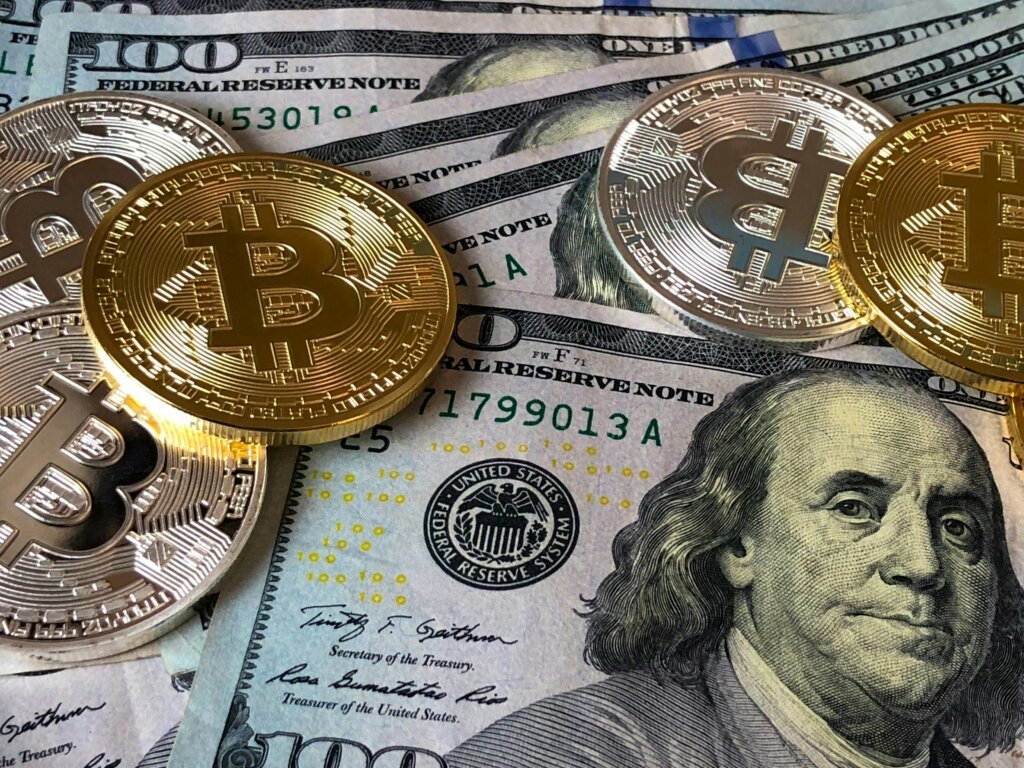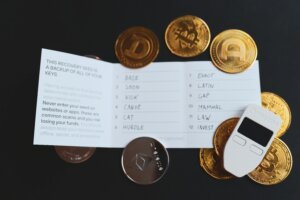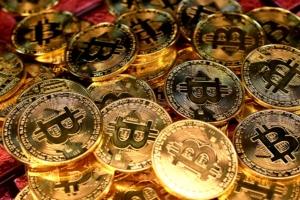Bitcoin vs. Traditional Money: A Complete Breakdown of the Future of Finance
Money is evolving. What was once gold, then paper, is now digital—and Bitcoin is leading the charge. But how does this decentralized digital currency really compare to the government-issued money we’ve used for centuries?
In this deep dive, we’ll explore:
✔ The origins of traditional money vs. Bitcoin
✔ Who controls them—governments or code?
✔ How they function in the real world
✔ Key advantages and disadvantages of each
✔ What the future holds for both systems
1. Origins & Historical Context: How Did We Get Here?
Traditional Money: A Story of Centralization
Traditional money refers to government-issued currencies such as the US Dollar (USD), Euro (EUR), or Japanese Yen (JPY). These currencies are the backbone of most economies worldwide and are recognized as legal tender within their respective countries.
The journey of money has evolved significantly over time. Initially, people relied on bartering goods and services directly. This system eventually gave way to the use of precious metals like gold and silver coins, which were easier to trade and store value. Later, paper money was introduced, initially backed by these precious metals, providing a convenient way to carry and exchange wealth without physically transporting coins. However, the most significant shift came in 1971 when the United States officially abandoned the gold standard. This meant that the US dollar—and subsequently many other currencies—became fiat money. Unlike previous forms, fiat currency isn’t backed by a physical commodity but instead derives its value from the trust and authority of the issuing government.
We can summarize Traditional Money by this diagram:
Bartering → Gold/Silver Coins → Paper Money (backed by gold) → Fiat Currency (backed by nothing but trust).
Today, traditional money is managed and regulated by central banks such as the Federal Reserve in the United States, the Bank of Japan, and the European Central Bank. These institutions control the money supply, interest rates, and monetary policy to maintain economic stability, inflation control, and financial system integrity.
Bitcoin: The Digital Rebellion
Bitcoin is a decentralized digital currency that first emerged in 2009, created by an anonymous individual or group using the pseudonym Satoshi Nakamoto. Unlike traditional money controlled by governments and central banks, Bitcoin was designed to operate independently of any central authority.
The creation of Bitcoin was a direct response to the 2008 global financial crisis, which exposed the vulnerabilities and risks inherent in the traditional banking system. Its purpose was to offer an alternative form of money that could bypass banks and intermediaries, giving individuals greater control over their own finances. One of Bitcoin’s most distinctive features is its fixed supply—only 21 million bitcoins will ever be created. This contrasts sharply with fiat currencies, which governments can print in unlimited amounts, often leading to inflation.
At the core of Bitcoin’s revolutionary design is its key innovation: decentralization. Instead of relying on a single institution, Bitcoin’s power is distributed across a vast global network of computers. This network maintains the blockchain, a public and immutable ledger that records every transaction securely and transparently. Because the blockchain cannot be altered or tampered with, Bitcoin ensures trust without needing a central authority.
2. Control & Governance: Who Really Holds the Power?
When it comes to money, who controls it—and how—makes all the difference. Traditional currencies like the dollar or euro are governed by central banks and governments, who have the authority to print more money, freeze accounts, or modify policies behind closed doors. In contrast, Bitcoin represents a radical shift: it operates without central oversight, relies on code and community consensus, and puts financial power directly in the hands of individuals. The table below breaks down the key differences between these two systems—centralized fiat money versus decentralized digital freedom.
| Feature | Traditional Money | Bitcoin |
|---|---|---|
| Control | Central banks & governments | Decentralized (run by code & consensus) |
| Supply | Unlimited (can be printed) | Fixed (21 million BTC) |
| Transparency | Opaque (decisions made behind closed doors) | Fully transparent (all transactions public) |
| Censorship | Accounts can be frozen | No one can block transactions |
In summary:
Fiat Money = Centralized Control
- Governments can print more money (leading to inflation).
- Banks can freeze accounts or reverse transactions.
Bitcoin = Decentralized Freedom
- No one can alter the Bitcoin supply.
- No middlemen—you control your money.
3. How They Work: Behind the Scenes
Traditional Money: The Banking System
Traditional money moves either as physical cash or as digital balances held within the banking system. To send or receive money—especially across borders—you typically need intermediaries like banks, credit card companies, or international networks such as SWIFT. These institutions act as gatekeepers, verifying transactions and managing the flow of money.
Behind the scenes, central banks play a powerful role through monetary policy. By adjusting interest rates and controlling the money supply, they influence inflation, employment, and overall economic growth. While this system is deeply established, it relies heavily on trust in centralized authorities.
Bitcoin: The Peer-to-Peer Revolution
Bitcoin moves in a very different way. It has no physical form—it exists purely as digital code stored in cryptographic wallets. These wallets are secured with private keys, and only the owner has control over them. When Bitcoin is sent, it’s transferred directly from one person to another, with no need for banks or intermediaries.
To ensure the system’s integrity, a decentralized network of miners validates each transaction. These miners solve complex mathematical problems to confirm the data, and once a transaction is approved, it becomes permanent and immutable—it cannot be reversed or altered. This system allows for secure, transparent, and censorship-resistant money movement on a global scale.
4. Advantages & Disadvantages: Which One Wins?
Take a look at the table below to the the differences between Bitcoin and Traditional Money.
| Feature | Bitcoin | Traditional Money |
|---|---|---|
| Speed (International) | Faster (minutes vs. days) | Slower (bank delays) |
| Inflation Risk | Low (fixed supply) | High (governments print more) |
| Accessibility | Anyone with internet | Requires bank account |
| Privacy | Pseudonymous (not fully anonymous) | Tied to identity (KYC) |
| Security | Unhackable (if keys are secure) | Bank fraud, freezes possible |
| Volatility | High (price swings) | Stable (usually) |
| Legal Status | Varies by country | Legal tender everywhere |
When Bitcoin will take advantages:
✔ Sending money internationally (lower fees, faster).
✔ Protecting against inflation (Venezuela, Zimbabwe examples).
✔ Financial freedom (no bank account needed).
Where Fiat Still Dominates:
✔ Daily transactions (most shops don’t accept Bitcoin yet).
✔ Stability (Bitcoin’s price can swing wildly).
✔ Government backing (legal tender status).
5. The Future: Will Bitcoin Replace Traditional Money?
Possible Scenarios:
Scenario 1: Bitcoin as “Digital Gold” – A store of value, not daily currency.
In this scenario, Bitcoin doesn’t replace traditional money, but instead serves as a modern version of gold—a way to store wealth over time. Just as people invest in gold to hedge against inflation or economic instability, they might turn to Bitcoin for the same reasons. It’s secure, scarce (with a fixed supply of 21 million), and easily transferable across borders. While Bitcoin may not be used for everyday purchases like coffee or groceries due to its price volatility and slower transaction speeds, it could become a trusted long-term asset in personal and institutional investment portfolios.
Scenario 2: Hybrid Systems – Central banks issue digital currencies (CBDCs) while Bitcoin coexists.
Governments around the world are exploring or launching Central Bank Digital Currencies (CBDCs)—digital versions of national currencies like the digital dollar, euro, or yen. These are still centralized and regulated, but offer the speed and convenience of digital transactions. In this model, CBDCs may become the mainstream medium of exchange for daily use, while Bitcoin exists alongside them, offering an alternative and decentralized option. People may choose between CBDCs for everyday transactions and Bitcoin for savings, investment, or borderless transfers. This coexistence allows governments to maintain control while giving individuals more choice and freedom in how they manage money.
Scenario 3: Full Disruption – If hyperinflation worsens, Bitcoin could become a global alternative.
In a more extreme and transformative future, worsening inflation, currency collapse, or financial mismanagement could push people to lose trust in traditional monetary systems. If fiat currencies become unreliable—especially in countries facing hyperinflation or political instability—Bitcoin could emerge as a global lifeline. Its decentralized nature, limited supply, and resistance to censorship would make it an appealing alternative. In such a world, Bitcoin could be widely adopted as a global currency, not just a store of value. People might use it for everything from everyday purchases to international trade, disrupting the dominance of national currencies entirely.
But there are Challenges that Bitcoin must overcome to make it happened:
- Volatility (needs more stability for daily use).
- Scalability (faster, cheaper transactions).
- Regulation (governments may resist decentralization).
Final Verdict: Which One is Better?
There’s no clear winner—it depends on your needs.
Use Traditional Money If:
- You want stability.
- You need widespread acceptance.
Use Bitcoin If:
- You value financial sovereignty.
- You want inflation protection.
- You need borderless, censorship-resistant money.
One thing is certain, Bitcoin has already changed how we think about money. The question is—how much further will it go?
(Want to learn how to buy Bitcoin? Check out our step-by-step guide here.)






Comments